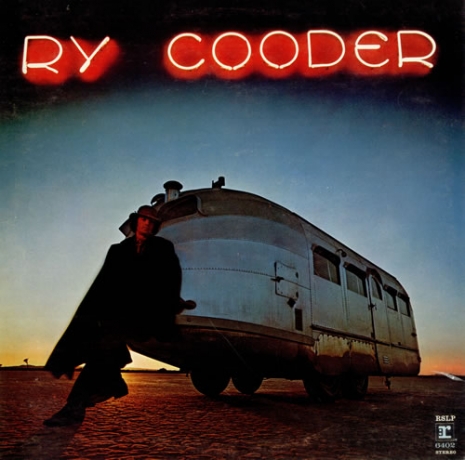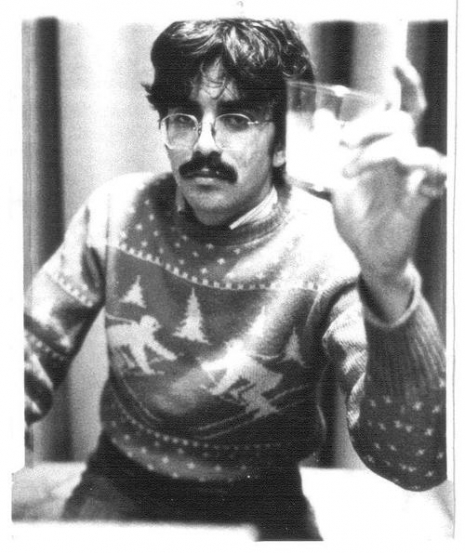
Here’s an interesting find. It’s a 14-minute promotional documentary that Warner Bros. put together for the 1970 debut album by a young performer named Ry Cooder, who was 23 at the time. What sets the movie apart is that the wonderfully eclectic singer and songwriter Van Dyke Parks, who had already released his first solo album Song Cycle, played on Tim Buckley’s first album, and contributed his considerable labors on Brian Wilson’s legendary Smile project (which eventually reached the public to great acclaim in 2004), was (quite strangely) at this time an employee of Warner Bros. tasked with overseeing the creation of promotional videos for Warner Bros. artists.
If anything, Cooder’s resume was even more impressive than Parks’ at this point, having already played on albums by the Rolling Stones and Captain Beefheart and Randy Newman. On this album Cooder actually covered Newman’s “My Old Kentucky Home (Turpentine & Dandelion Wine).”
A universally revered master of the slide guitar, Cooder would later become renowned for his work on movies starting in the 1980s, among them his collaborations with Wim Wenders, most notably the Oscar-nominated documentary Buena Vista Social Club.

Van Dyke Parks, enjoying a beverage
In 2013 Keith Connolly interviewed Van Dyke Parks in the pages of BOMB, during which the two men had following exchange about his stint at Warner Bros.:
Connolly: Let’s talk about Warner Bros in the ‘70s. Around ’71 there was an AV department you were put in charge of?
Parks: Yeah, but I wasn’t put anywhere at Warner Bros. I insinuated myself into that, I made up that audio/visual services. As a matter of fact it was a decision, a career decision, you might say, to put the audio before the visual.
Connolly: Right.
Parks: I had a department with five employees. We made 13 promotional films (and they were films), which were by nature documentary, so that they could be rented or bought by any accredited music school. They were instructive, they were entertaining, they were promotional—but they could create an income stream for musicians who were hard-pushed into tours that required drugs to sustain them.
We would spend $18,500 in the production of one film. Generally, they would be 10 minutes in length or song length. The one exception was for a Steel Band documentary, which was a 40-minute documentary about a trip through the South, a bunch of black men going through the American South. That was a fascinating, gripping adventure which I felt deserved to be presented. But having recovered the production expenses—that is, having broken even—I provided that each artist would get 25% of the net profits of the rentals or sales. It was going to be a very promising market for the artist. Warners soon tired of what I thought was a fair equation of participation in creative profits, and basically isolated me to the extent that I left.
According to Wikipedia, only the Cooder film and the 40-minute one on the steel band are known to have survived. Among the material heard in the documentary are Cooder’s renditions of Woody Guthrie’s “Do Re Mi,” Blind Alfred Reed’s “How Can a Poor Man Stand Such Times and Live?” and Sleepy John’s “Goin’ to Brownsville.”
Previously on Dangerous Minds:
Van Dyke Parks Keeps On Cyclin’
Van Dyke Parks performs Heroes and Villians live on WNYC